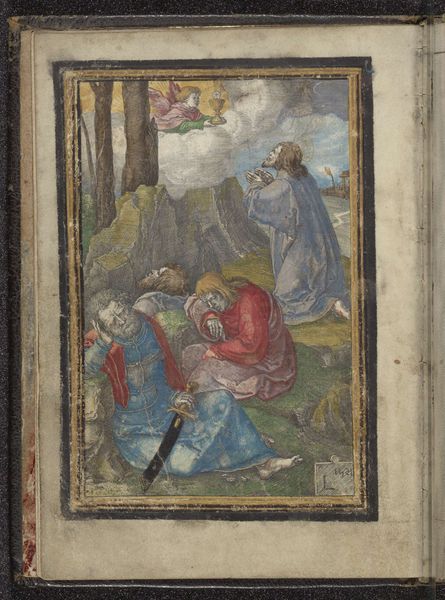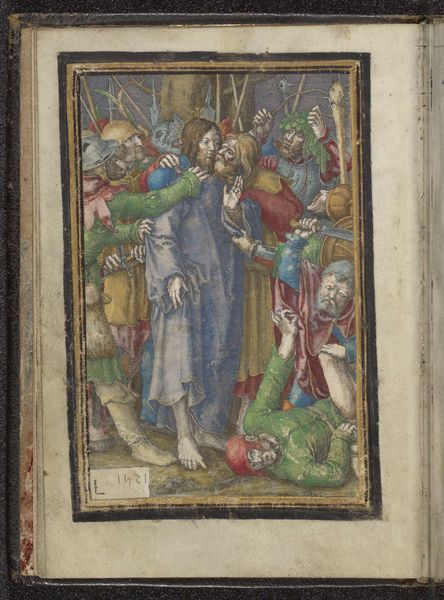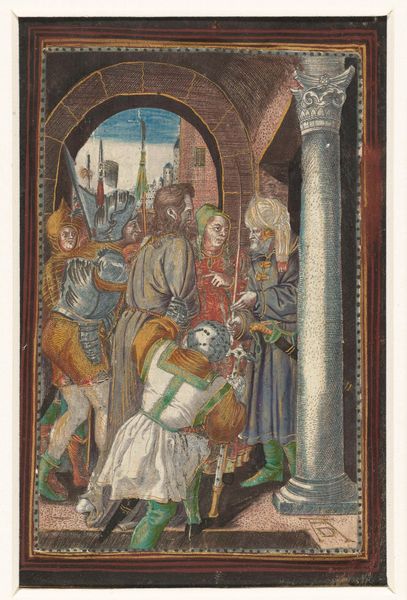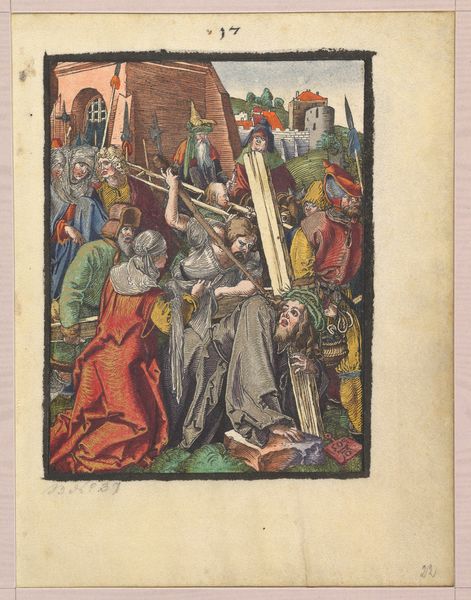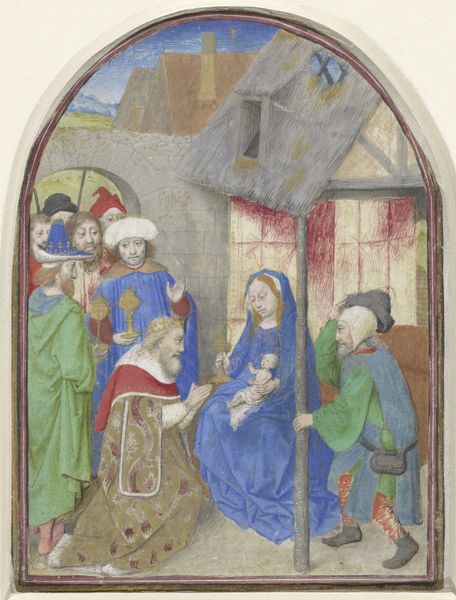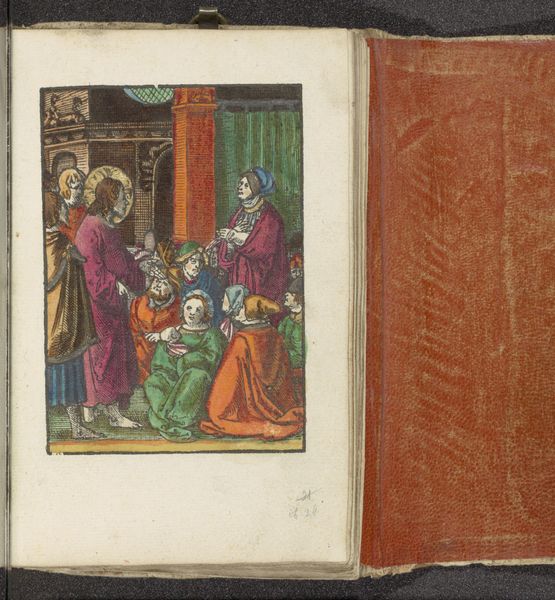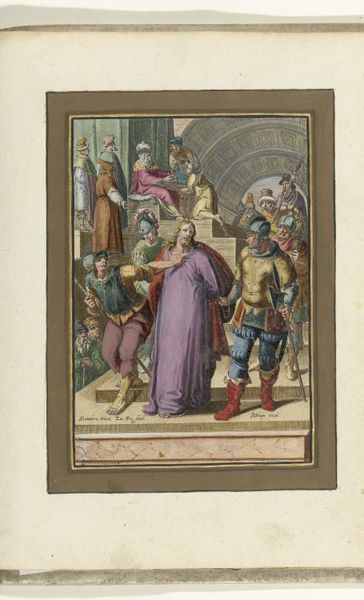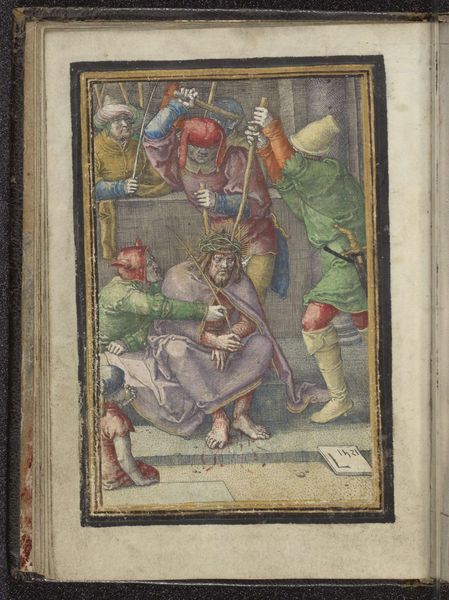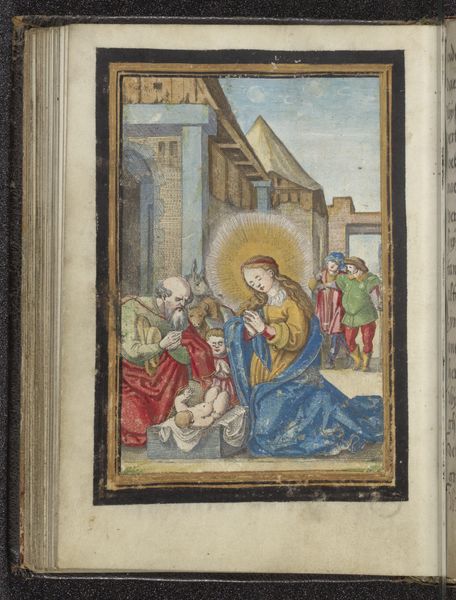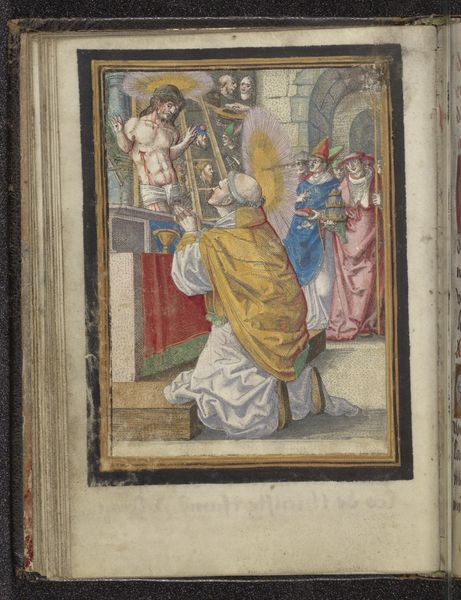
painting, watercolor
#
water colours
#
narrative-art
#
painting
#
figuration
#
oil painting
#
watercolor
#
italian-renaissance
#
watercolor
Dimensions: height 149 mm, width 105 mm
Copyright: Rijks Museum: Open Domain
Curator: Here we have Lucas van Leyden's "The Bearing of the Cross," created in 1521. It's rendered in watercolor and tempera, showcasing a pivotal moment from the Passion of Christ. Editor: My initial impression is the deep pathos. The confined composition really concentrates the emotional weight, forcing you to confront the central figure’s suffering. Curator: The physicality is striking, isn’t it? Look at how the rough texture of the cross contrasts with Christ’s pale skin. I’m curious about the process of applying the watercolour in such fine detail; notice the layering and delicate rendering. Considering it was produced in 1521, how accessible were such expensive and far travelled raw materials for its production? Editor: Yes, but also consider the symbolism. The crown of thorns isn’t just a depiction of suffering, it’s a symbol of wrongful authority, mocked regality. The cross itself, crudely fashioned, becomes an emblem not just of physical torment but of spiritual burden and eventual redemption. Look at how all the faces, too, contribute to this intense iconography. Every figure’s position seems deliberately considered and laden with symbolism, amplifying Christ’s solitary path. Curator: The choice of watercolor itself contributes. Watercolor wasn't considered one of the ‘high’ arts until later. Here, it becomes an act of material significance and rebellion in the artistic environment of the Renaissance. What does it mean to select what was at the time, considered an inferior material to tell this critical, pivotal religious story? I also wonder how this choice might reflect Van Leyden’s perspective, given his departure from more traditional approaches? Editor: Perhaps the use of watercolour makes a visual reference to humility in representing something which cannot fully be represented by ‘high’ artistic expression. After all, many different expressions of pain can’t be reduced down into neat symbolic gestures but accumulate chaotically on the body; watercolor almost simulates this visual complexity and subtlety. Curator: That tension really highlights a conflict. A moment of profound grief rendered with, at that time, what was viewed as commonplace materials creates a tension worth contemplating within itself. Editor: Agreed. There's an inherent power in this work’s depiction of suffering through the symbolism it uses to convey enduring themes of injustice, grief, and, ultimately, sacrifice.
Comments
No comments
Be the first to comment and join the conversation on the ultimate creative platform.

